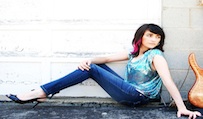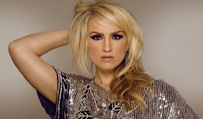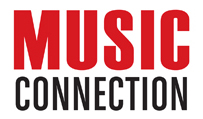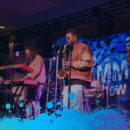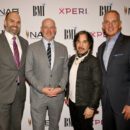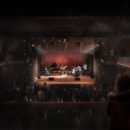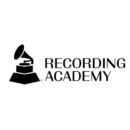Though varying widely in age, the group of stellar players we've assembled for this year's roundtable discussion share some of the same concerns about music and performance––and especially the status of the guitar and bass in modern times.
By Daniel Siwek
DENNIS COFFEY
Contact: Nate Mars, !K7, nate@k7.com
Web: www.denniscoffeysite.com
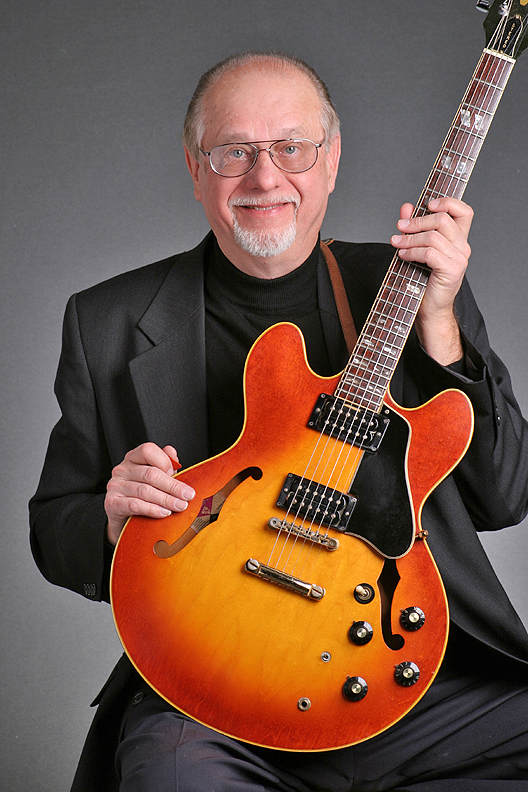 In the time it took for you to read this sentence you’ve probably been listening to Dennis Coffey’s funky sound. He’s lent his mojo to producers like Quincy Jones, Norman Whitfield, and George Clinton. He’s played on hits by the Four Tops, Marvin Gaye, the Supremes, and of course, his psychedelicized Temptations. He’s the first white guy to appear on Soul Train, and every hip-hop artist in the game has sampled him, and now he’s back with a new Strut Records release, one that finds him refreshing some of his classics along with some newbies. The album is titled, Dennis Coffey, and that says it all.
In the time it took for you to read this sentence you’ve probably been listening to Dennis Coffey’s funky sound. He’s lent his mojo to producers like Quincy Jones, Norman Whitfield, and George Clinton. He’s played on hits by the Four Tops, Marvin Gaye, the Supremes, and of course, his psychedelicized Temptations. He’s the first white guy to appear on Soul Train, and every hip-hop artist in the game has sampled him, and now he’s back with a new Strut Records release, one that finds him refreshing some of his classics along with some newbies. The album is titled, Dennis Coffey, and that says it all.
THE BEGINNING
My mom told me I could name every song on the radio when I was two or three-years-old. I had cousins that played great country and western guitar and I loved the way it sounded. My mom’s friend gave us an old Hawaiian guitar but the strings were so high up I couldn’t figure out how to get them down so I could play it like a Spanish guitar, so we went to the pawn shop and my dad bought me a $15 dollar Harmony acoustic. My cousins showed me some Hank Williams, and then I got heavily into the Sun Records rockabilly stuff. I remember listening to Chuck Berry play “Johnny B. Goode” and thinking, “What in the world is this sound?” So I went to an esteemed teacher in town and asked if he could show me, but he said he had no idea what Berry was doing. You see, I had to learn how to play R&B and soul off of the radio, because the music was so new that guitar teachers didn’t know what it was yet––and forget about teaching it.
EVOLUTION
I’ve been able to reinvent what I do by getting out there and playing live in front of the people. You need to play in front of people so that they can judge whether your practice is paying off or not. If you’re just playing alone in the living room all the time, you’ll never know if you suck. But if you suck while you’re playing live, people will just get up and leave. I’m still a student of the instrument, and right now most of the guys I play with are younger than me; the only time I wasn’t the oldest guy in the band was when I played with Les Paul a while ago, and sadly, he’s gone.
CHANGING THE TEMPS
I guess you can say I was the tool, if you will, that Norman Whitfield utilized to change or update the Temptations' sound. Norman liked what I was doing in the clubs and he wanted to get the Temps away from the love songs and into the social commentary that was happening out there. I hardly knew anybody on that date, but I remember using a wah and distortion pedals, and my Gibson Firebird. I think it’s a 1963 Firebird, and I used it on my current session because I figured that guitar’s been on so many hits, why not one more?
PRETTY FLY FOR A WHITE GUY
I’m happy being the first white guy to appear on Soul Train. Most acts would pantomime to the record, but I brought my whole band and we kicked it out live to a packed audience. For the most part, if you could deliver in the studio or in the clubs people didn’t care what color you were. I mean, I was playing the Frolic Room with black musicians just a few miles away from where the Detroit Riots happened. I do recall this one DJ, when we went out to L.A. in 1971 to promote “Scorpio,” who looked at me and said, “Oh no, sorry, we absolutely cannot play any white records,” I asked to look at his playlist and then I nicely pointed out that I’m on the top three songs, so he was playing me whether he knew it or not. And that’s when he played “Scorpio!”
THE NECK
I haven’t thought in scales and chords terms in years and years. I think of the neck in terms of tonal centers, and I work my way through. Everybody has blues-scale sounds, or the same lick here or there, but at this point of my career I see the neck of the guitar more like a piano, and I can play from the very lowest string all the way up to the highest note of the fingerboard. I also do a lot of Django Reinhardt open stuff.
SESSION SAVY
You always come prepared. Make sure you’ve got extra strings, picks, and always leave ahead of time so you can show up early or on time. You can forget about alcohol, weed, or any of that stuff. I will not have one drink until I’m done playing, because I’m still reaching for the stars. You can’t be on top of your game and play the kind of music I do if your brain doesn’t have instant access to your fingertips, because then your fingers won’t go where your brain wants to take them. And when it comes to delivering a fresh take, that’s the difference between hiring somebody who knows how to read charts or not, because by the time someone takes the confusion out of the charts, I’ve already cut it and moved on to the next song.
At Motown we cut one song an hour, so that kept things fresh, but if a producer wanted to beat a song to death we called it rigor mortis. The repetition sets in and your mind starts to wander and that’s when you take your charts for granted and start to make mistakes.
GUITAR HEROES
The Nashville crowd has kept the guitar very prominent; they’ve got some great players down there. The heavy metal guys have also been keeping the guitar alive. But now I’m playing a lot of clubs with 20-somethings and it seems that they’ve discovered live R&B again. They’re forming bands with their own spin on the music and it’s live instead of computer generated and sampled. So that’s great to see.
JACK O’SHEA
Bayside
Contact: Catie Monck, cmonck@winduprecords.com
Web: www.baysidebayside.com
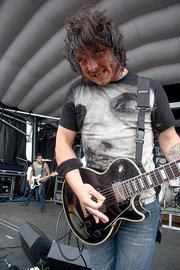 A killer guitarist in a kickass new-ish band is a great way to describe Bayside’s Jack O’Shea. The band’s urban suburban sound represents their Queens, NY namesake well, as the band take their show on the road throughout the spring and the summer in support of their latest, Killing Time. O’Shea is a great example of a new breed of shredder, one who cares as much about the song as he/she does the technique; one that incorporates everything that indie-rock has to offer in terms of song, but takes advantage of metal in terms of volume.
A killer guitarist in a kickass new-ish band is a great way to describe Bayside’s Jack O’Shea. The band’s urban suburban sound represents their Queens, NY namesake well, as the band take their show on the road throughout the spring and the summer in support of their latest, Killing Time. O’Shea is a great example of a new breed of shredder, one who cares as much about the song as he/she does the technique; one that incorporates everything that indie-rock has to offer in terms of song, but takes advantage of metal in terms of volume.
FIRST GUITAR
My friend Kevin Rheault, who is the guitar tech for Drop Dead Murphy, sold me my first guitar for 25 bucks when I was nine years old. It was a Cort solid body electric and it was a total piece. I had just seen Back to the Future in the theaters and I thought, “Wow that would be so awesome if I could just play guitar!” And I know it’s not the most metal guitar, but there was something about the way Michael J. Fox played that Gibson ES 335 just spoke to me All the tuning holes were stripped and there was nothing that could be done with it, short of chucking it, so I gave it to another neighbor who was just learning. I think that guitar was the jumping off point for at least three other people.
THE BUTTERFLIES
I must admit that a couple of cocktails are just enough to get physically loose, so I can get into that mental space where I’m on autopilot. It also helps me get into that mental space where I’m ready to go into war and be as aggressive as possible without losing a level of precision. If I go up on stage fully sober, I think I end up over-thinking.
MY SOUND AND STYLE
On this tour I waited for Anthony Raneri (lead vocals and rhythm guitar] to dial in his tone and I then I built something around it that I felt that I could complement it. His sound is a little darker, a little heavier, and with some thicker gain, but not too muddy, and mine tends to have more mids and highs, so I can cut through just a little while we blend our highs together. As far as my style, I like to be technical within the boundaries of the song, like I want to push my guitar playing as far as I can without taking away from the song. I want it to be interesting enough technically, still, because I don’t want it to sound like a dumbed down version of a well thought-out shredding guitar part.
MUST OWN GUITAR ALBUM
For me that’s easy. Friday Night in San Francisco – Live with Al DiMeola, John McLaughlin and Paco DeLucia. It’s three people playing acoustic guitar with lightning speed and unmatched precision that is so flawlessly performed that it’s inspiring. It’s easy to shred when you’re hiding behind a sea of effects, but to lie there naked and exposed while maintaining that level of musicianship is incredible.
GUITAR HEROES
Most of my life I've heard, "Dude you were born in the wrong time." I love the metal guitar of guys like Kirk Hammett from the '80s, but unfortunately that style was put on the back burner in the days of grunge. Now, after Guitar Hero, metal is getting huge again, and there are a lot more bands trying to be adventurous with the guitar again. I’m happy that we’re a part of that. I’m flattered that we’re even talking about this stuff because I waited and waited for these times to come back, and I see so many kids out there now that are so fucking good on lead guitar. I feel a little nervous about being overshadowed! We really care about the musicianship and, despite all the emphasis on the chicks and the drugs, those guys in the '80s could really play their instruments.
GUITARS ON EBAY
It’s a little bit of a gamble, but I bought both of my main guitars [Gibson Les Paul Custom and Standard] online and those are the ones I take on the road. First you narrow down all the technical specs and aesthetics that you’re looking for––but pay close attention, because if it looks beat the fuck up, than it probably is beat the fuck up.
ARONE DYER
Buke and Gass
Contact: Pitch Perfect PR, jessica.linker@gmail.com
Web: www.bukeandgass.com
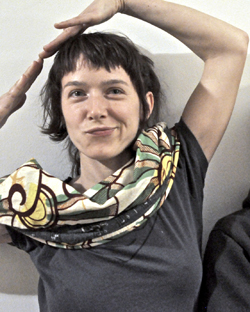 One six-string baritone ukulele and one weird guitar/bass hybrid equals Buke and Gass. Arone Dyer and Aron Sanchez’s duo is eclectic to say the least. But don’t you dare hail her as the next big ukulele player! Their full-length debut, Riposte, has an acoustic punk ethos and a driving beat that’s iterally coming from their feet.
One six-string baritone ukulele and one weird guitar/bass hybrid equals Buke and Gass. Arone Dyer and Aron Sanchez’s duo is eclectic to say the least. But don’t you dare hail her as the next big ukulele player! Their full-length debut, Riposte, has an acoustic punk ethos and a driving beat that’s iterally coming from their feet.
BEGINNINGS
I’ve always been around the guitar. My dad had, like, six of them on the walls, and would teach me every once and a while. When I was like nine or 10, he gave me a classical acoustic guitar that had this huge neck. I remember learning Paul McCartney’s “Blackbird,” and, of course, “Stairway To Heaven,” and then I went out and got a Bob Dylan songbook––because he’s from Minnesota and I’m from Minnesota! When I was 15 my dad gave me another one of his guitars, this one was a sweet, sweet solid body electric by Ovation. Since I had a piano background I knew the concept of all the notes, so I began to just make up my own chords and document my progress, and my newly discovered chords, on film as I would learn.
BUKE & GASS
We call it a buke because we used a baritone ukulele as its body, but it’s more like a guitar. I don’t see myself in the tradition of the ukulele at all, and I see myself connected to other ukulele players the way I see myself connected to other guitar players––which is not at all. The gas is an instrument that Aron is working on and probably will never finish working on, basically, because the man needs something to do. The one that he’s been playing for the last couple of years is a metal one that a friend built.
STIFFNESS
I think good action on the fretboard helps, and another thing is how you hold your guitar; you see all these people with their instruments hanging down low––I mean, c’mon, their wrists are totally cranked and it looks so painful. The other thing I do to prevent stiffness–– and you’re going to hate me––is yoga. Ever since I had that carpal tunnel scare with my wrists I’ve done a lot to try to figure out how to relieve that pain, and I’ve found that nothing beats keeping my wrists stretched and strong.
STRUNG UP
I use extraordinarily heavy strings and I’m not sure why except I think I always liked heavy strings. My high E is really a D and it’s an 18 (.018) gauge, and my lowest string is a 65 (.065) gauge. I don’t like the sound of super thin strings, because they sound too twangy, and I also think that the thicker strings complement my guitar’s shorter fretboard. I can still bend the strings, I have really strong fingers, but I don’t do that too much!
THE LUTHIER
I just wanted to work for a luthier and build instruments. I was there for, like, nine months, long enough to have a kid, and actually I did leave with a four-string baritone guitar, but I don’t use it for anything. I did a lot of internal repairs because I could fit my hands into smaller guitars. I could fret and re-fret a guitar easily, as well! I can’t say that I walked away with a better appreciation of the best kind of wood or anything, because I just don’t care. You can build a table out of any kind of wood, and as long as it’s sturdy it’s going to work.
ROBIN TROWER
Contact: David Maida, dmaidapr@aol.com
Web: www.trowerpower.com
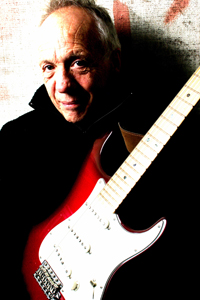 Robin Trower is one of the guitar gods. From his work with prog-rock innovators Procol Harum to his solo work that not only stretched the boundaries of guitar playing, but of his relationship to his guitar as a songwriter. Even though we may put Trower on that guitar hero pedestal, it’s clear that he would prefer being known as a guy who played a mean guitar and wrote some great songs as well. His new V-12 Records release, The Playful Heart, showcases the kind of emotive guitar playing that we loved in his classic, Bridge of Sighs.
Robin Trower is one of the guitar gods. From his work with prog-rock innovators Procol Harum to his solo work that not only stretched the boundaries of guitar playing, but of his relationship to his guitar as a songwriter. Even though we may put Trower on that guitar hero pedestal, it’s clear that he would prefer being known as a guy who played a mean guitar and wrote some great songs as well. His new V-12 Records release, The Playful Heart, showcases the kind of emotive guitar playing that we loved in his classic, Bridge of Sighs.
BEGINNINGS
I was a big fan of Scotty Moore; I just loved his guitar playing and I definitely knew I wanted to be a guitar player. When I was 14 my dad bought me a Rosetti, with a cello-type body, for Christmas. I still didn’t try to play along with the records; I just played for my own amusement. I’ve been influenced by a tremendous amount of stuff, but my all-time biggest influence is James Brown. Albert King was another huge influence on me. I wasn’t really into the other rock bands, because I would listen mostly to black artists, so even though I was a big fan of Cream, I’d prefer to listen to Howlin’ Wolf, Jimi Hendrix, Nat King Cole, and B.B. King, who totally changed the direction in which I was going to play. I hunted down everything he ever did.
GUITAR FAVES
There was a time there that B.B. King’s Live at the Regal never left my record player, and I’m talking for months. I would say it’s my favorite guitar album of all-time. But I would also recommend anything early by Scotty Moore, “Crosscut Saw” by Albert King, and “Machine Gun” by Jimi Hendrix.
SET-UP
I’m using these Marshall 100’s in the studio, and I all my pedals are made by Mike Fuller of Fulltone in California. They make me my signature overdrive and I also use their Deja Vibe, which is sort of the modern version of a Uni-Vibe that I used on Bridge Of Sighs and a few other things. Oh, and I also had them make me a wah pedal, but instead of a foot-sweep it’s got a volume and tone control, so I can preset it and just kick it in for another gear, or a little bit more scream.
HENDRIX
He redefined electric guitar playing for everybody, not just me. I think he was the natural progression from B.B. King and Albert King. I wouldn’t go so far as to say that Hendrix changed my world or the way I played guitar. In fact, it was his writing and his compositional skills that influenced me even more than his guitar playing. My own development kept me coming up with more stuff for me to do with the guitar, not as a shredder or a guitar virtuoso, but from the compositional side. Why wasn’t there another black guitar player crowned the “new Jimi?” Because you can’t re-reinvent the wheel––Jimi already reinvented it.
SOMEBODY CALLING
For that metallic sound, I used an Electric Mistress. I don’t know how you would describe it, but it was a pedal in the '70s that I used.
SIGNATURE STRAT
I mostly played a Gibson with Procol Harum. But once when we were on the road with Jethro Tull, their guitar player Martin Barre had a Fender Stratocaster as a spare. So I picked it up one day and plugged it into my amp and said, that’s it! Oh yeah! That’s what I’m looking for. I can only tell you the Strat has a human voice quality to its character, where I think the Gibson just sounds like a guitar. I’ve got a signature model Strat that I used and it’s got the kind of neck and the frets that I’m comfortable with. It’s a great honor to be endorsed by Fender for the last five years.
PLAYING SOLO
There is sort of a technical side of trying to play with just the bass and drums that I find really appealing. You have to make up for the instrument that’s missing all the time, and I like creating the whole music, so I don’t need another guitar part playing what I would otherwise be playing. I’m friendly with some of the big guitar players, but I don’t really know any of them. I mean, I know Eric Clapton is a good guitar player and so is Jeff Beck, and I respect them as players, but their music is not what I’m into––it’s just not my cup of tea.
AMANDA RUZZA
Contact: Definition Branding & Marketing, phillip.weiss@definitionbam.com
Web: www.amandaruzza.com
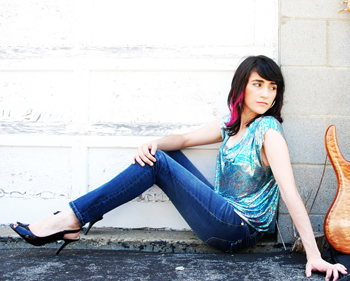 Amanda Ruzza does the fretless bass justice, especially in the way she makes the notes slink into one another. Perhaps that’s because, as you’ll discover, this performer has always shadowed the beat, having initially aspired to being a drummer. She picked up the rhythms of Santiago, Chile and combines that with all the technology the modern world has to offer.
Amanda Ruzza does the fretless bass justice, especially in the way she makes the notes slink into one another. Perhaps that’s because, as you’ll discover, this performer has always shadowed the beat, having initially aspired to being a drummer. She picked up the rhythms of Santiago, Chile and combines that with all the technology the modern world has to offer.
CURRENT SET UP
Currently, I’m working with (all five-string basses): a Ken Smith Elite, Tobias Growler and a Ladessa Fretless. For live settings I usually bring my own BSS D.I., since I feel that’s very important to be able to send a perfect and balanced sound to the P.A, and whatever bass I feel fits for the gig. Also, if it’s something more rock or pop, I usually bring some pedals like the MXR Envelope Filter, Bass Octaver and the Way Huge Swollen Pickle. If it’s a Latin/groovy jazz gig, I’ll bring my MXR chorus, since I’m a huge fan of those Elis Regina records from the '70s where bassist Luizão Maia would play the most awesome samba grooves with a chorus, hahaha!
BEGINNINGS
I began playing bass because I loved drums. As a little kid, I kept asking my parents to buy me a drum set, but they would always say that it was too expensive and that I would make a bunch of noise and not take it seriously. So one day (after having asked it for four years), I was walking around the streets of Santiago, Chile and saw a small music school. I had a little money and offered it to the owner of the place to allow me to have bass lessons every day for two weeks. My thinking was, “If I can’t be a drummer, at least I want to be next to the drummer.”
PICKING THE RIGHT BASS
It’s a very difficult decision. The instrument needs to sound amazing, feel amazing and look amazing. Otherwise, there will be no real connection to it and it will end up in a storage room. It’s not about the money, it’s about what makes the player feel best. I’ve tried super expensive basses that didn’t sound or feel as good as one of my basses (which cost four times less). But that didn’t mean it wasn’t a good instrument; it just wasn’t a good fit for me.
DRUM AND BASS
For me, if there’s no connection between the bassist and the drummer the whole group will not sound good. Sometimes I even want to hear more drums than myself in the mix, and I keep an eye connection with the drummer, as well. Some drummers are flexible and will follow the bass player, but others aren’t, so if I notice that the drummer is not following me very much, I change my approach and follow the drummer.
PLUG-INS
The only plug-in that I endorse and truly adore is the Lexicon LXP. And that’s because I feel that currently there are so many of those out there luring musicians into buying them because they have endless features, but don’t do the basic and most important thing: sound good and enhance the recording. I feel that with so much available nowadays it’s hard to find plug-ins that make the recording sound good without sounding artificial. Many plug-ins sound like fake sugar, but the challenge, at least for me, is to find plug-ins that will sound like real sugar (analog stuff) but without the calories (cost of analog recording).

